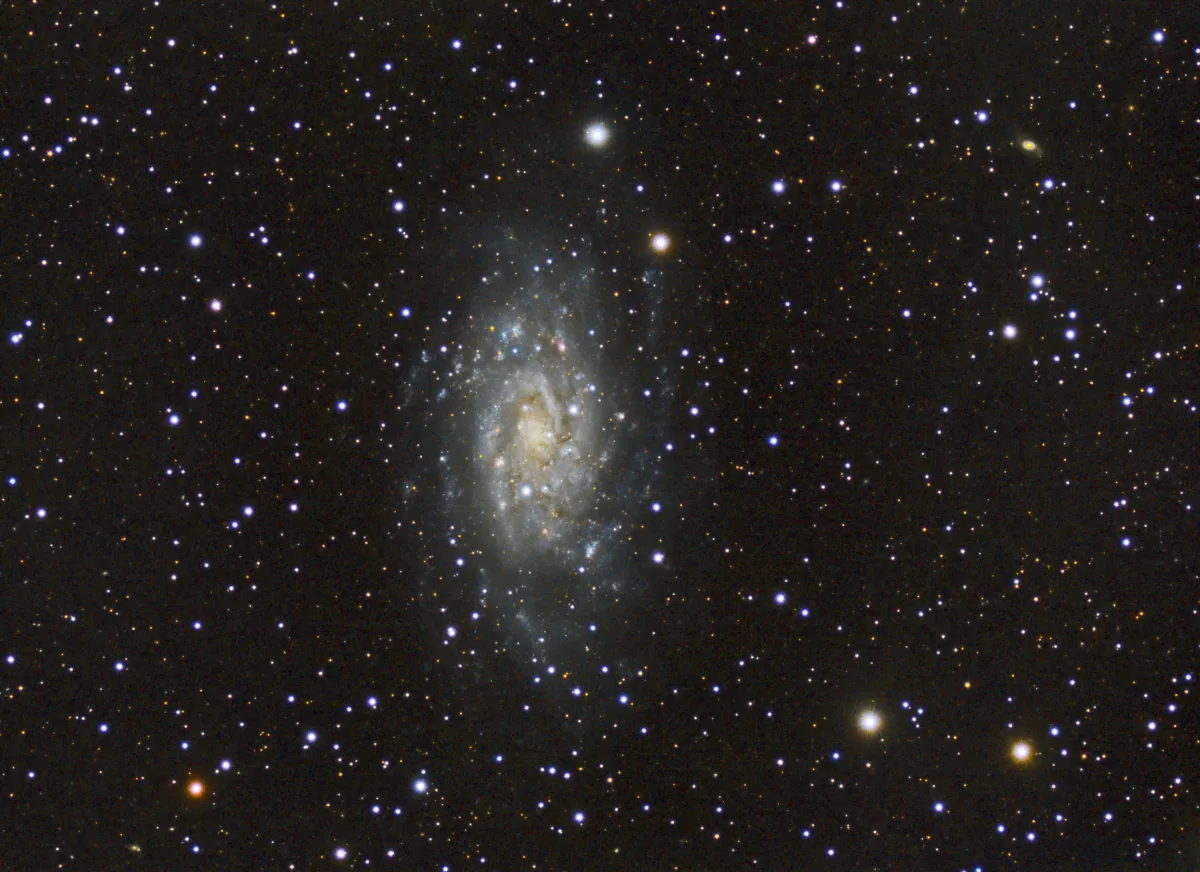Galaxy NGC 2403
History
The galaxy NGC 2403 was discovered on 1 November 1788 by William Herschel with his 18.7 inch reflecting telescope. He cataloged it as V 44 (class V = very large nebulae) and described it: «Considerably bright, round, very gradually brighter in the middle, bright nucleus 6 or 7' diameter with a faint branch extending a great way to the northern preceeding side not less than 1/2 degree, and to the north or north following the nebulosity diffused over a space not less than a whole degree.» [464] On 2 February 1886 the french astronomer Guillaume Bigourdan pointed the 12.4 inch refractor of the Paris Observatory to this nebula and found within a «very faint, very small» knot, which later became NGC 2404. [277]


Physical Properties
Distance determinations range from 3.1 Mpc to 4.2 Mpc. [145] The galaxy belongs to the M 81 galaxy group. It is home to several H-II star-forming regions, the brightest of which has its own NGC designation: NGC 2404.
| Name | RA | Dec | Type | bMag | vMag | B-V | SB | Dim | PA | z | D(z) | MD | Dreyer Description | Identification, Remarks |
|---|---|---|---|---|---|---|---|---|---|---|---|---|---|---|
| NGC 2403 | 07 36 50.6 | +65 36 06 | Gx (SBc) | 8.9 | 8.5 | 0.4 | 14.4 | 23.4 × 11.8 | 127 | 0.000437 | 1.85 | 3.580 | !! cB, eL, vmE, vgmbMN | WH V 44; GC 1541; UGC 3918; MCG 11-10-7; CGCG 309-40; IRAS 07321+6543; KARA 197; CGCG 310-3 |
| NGC 2404 | 07 37 07.0 | +65 36 40 | GxyP | 14.5 | 0.4 | 3.580 | vF, vS | HII/Association in N 2403 |
Finder Chart
The galaxy NGC 2403 is located in the constellation Camelopardalis. The best time for observation is from September to June, when it is highest in the night sky.
